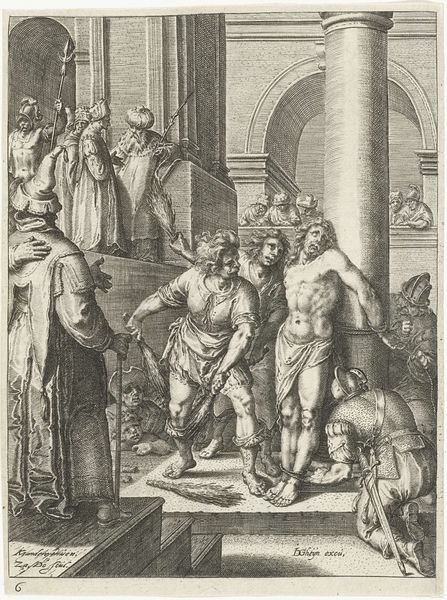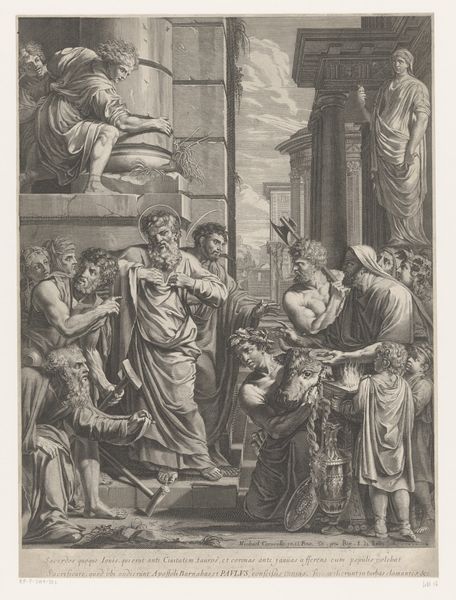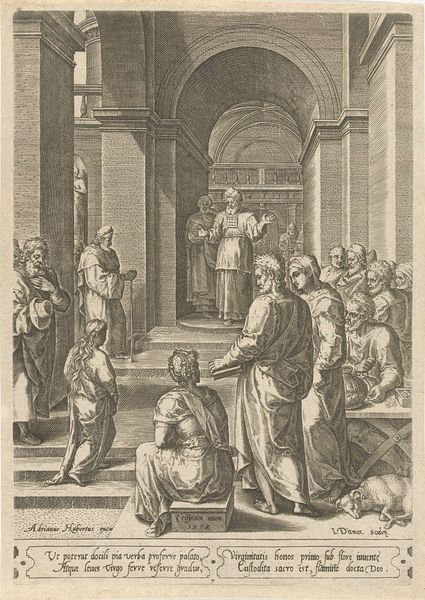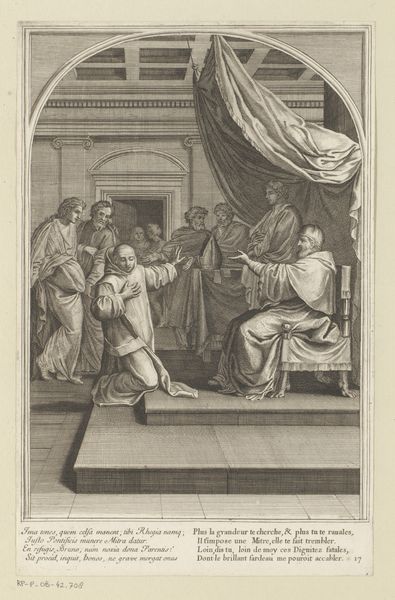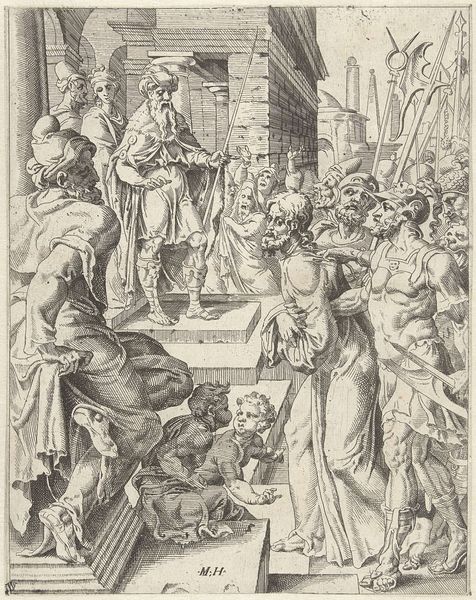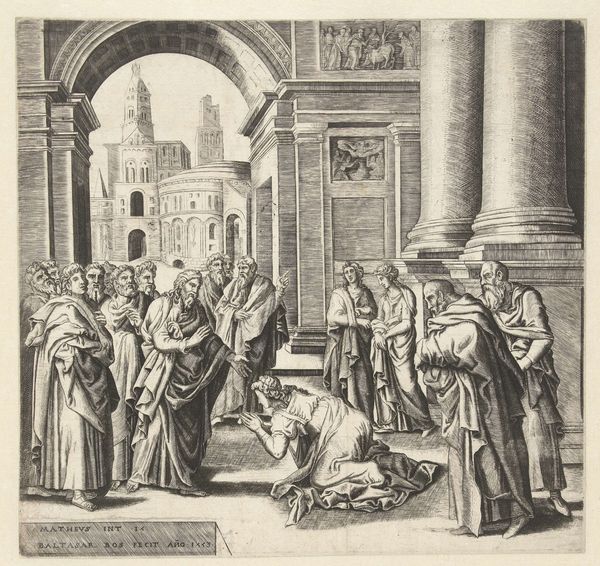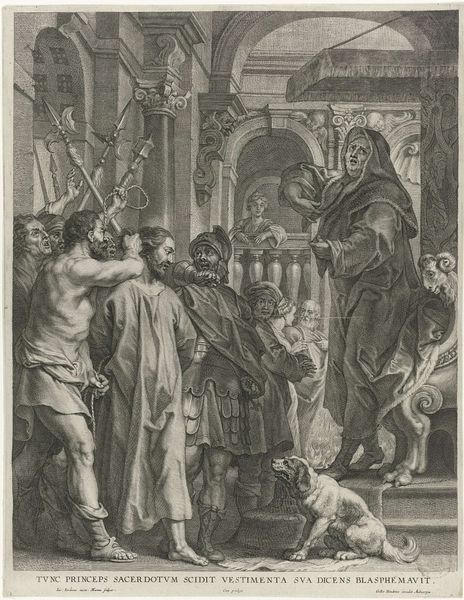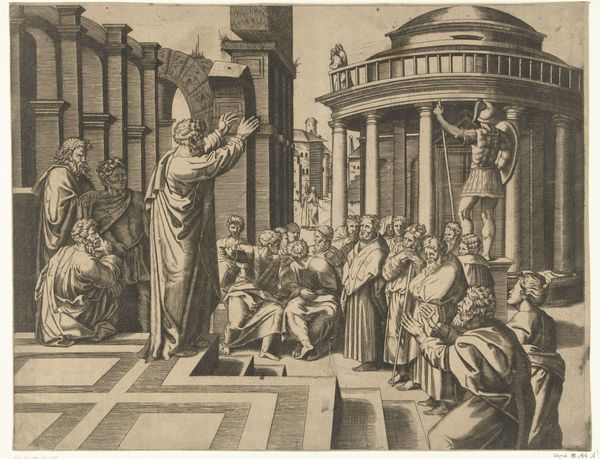
Kwijtschelding van de schuld van de knecht door de koning 1554 - 1612
0:00
0:00
dirckvolckertszcoornhert
Rijksmuseum
print, engraving
# print
#
figuration
#
line
#
history-painting
#
northern-renaissance
#
engraving
Dimensions: height 259 mm, width 194 mm
Copyright: Rijks Museum: Open Domain
Curator: Welcome. Before us is a Northern Renaissance print by Dirck Volckertsz Coornhert, crafted sometime between 1554 and 1612: "Kwijtschelding van de schuld van de knecht door de koning," residing here at the Rijksmuseum. It’s an engraving. Editor: My first impression is one of severe contrasts. The composition is split—one side is rigid and formal, the other begging and destitute. I feel the weight of injustice immediately. Curator: The line work is particularly striking. Observe how Coornhert utilizes it to define form and space, the architectural rendering especially. Note also how the line lends a sharp, almost didactic quality to the moral narrative. Editor: Absolutely. I think it depicts a specific biblical moment—the parable of the unmerciful servant. The kneeling figure represents the servant who begs forgiveness, while the king, surrounded by advisors, embodies authority. It is ripe for critiquing the era’s power structures. The tools on the floor only reinforce this point about class difference. Curator: Intriguing to interpret it through that lens. I am drawn to the geometric relationship of the figures; how the king's gestures, his arms outstretched, create visual pathways that unify the diverse spatial elements. It creates balance. Editor: Balance is there, but at whose expense? What about the socio-economic implications, even today? This is more than just visual pleasure, it should be about understanding disparities. What does "divine" forgiveness really mean when structures perpetuate inequality? Curator: The setting itself contributes, wouldn't you agree? Notice the receding arches, drawing our eye through the different depths of the print? It functions as more than simple backdrop. Editor: The space certainly frames the action, heightening our sense of drama. But look beyond that—it places that act of supposed “forgiveness” within an explicit spatial hierarchy. Consider the contemporary relevance—does such "generosity" address core inequalities, or does it simply mask them? Curator: It seems clear this work, even centuries on, holds much for us to examine about human power and mercy. Editor: Indeed. This engraving's strength lies in its starkness. The black and white compels questions about social accountability that still resonate.
Comments
No comments
Be the first to comment and join the conversation on the ultimate creative platform.
